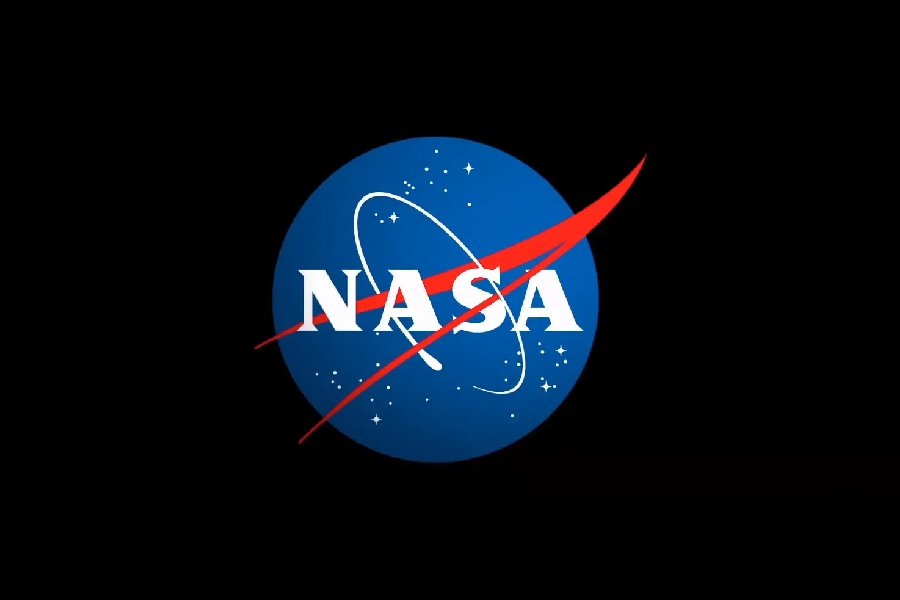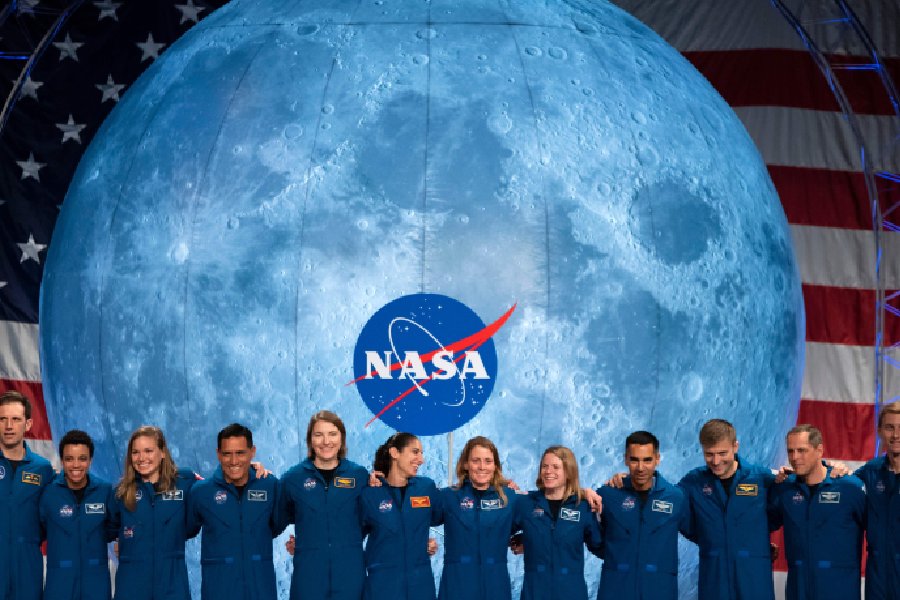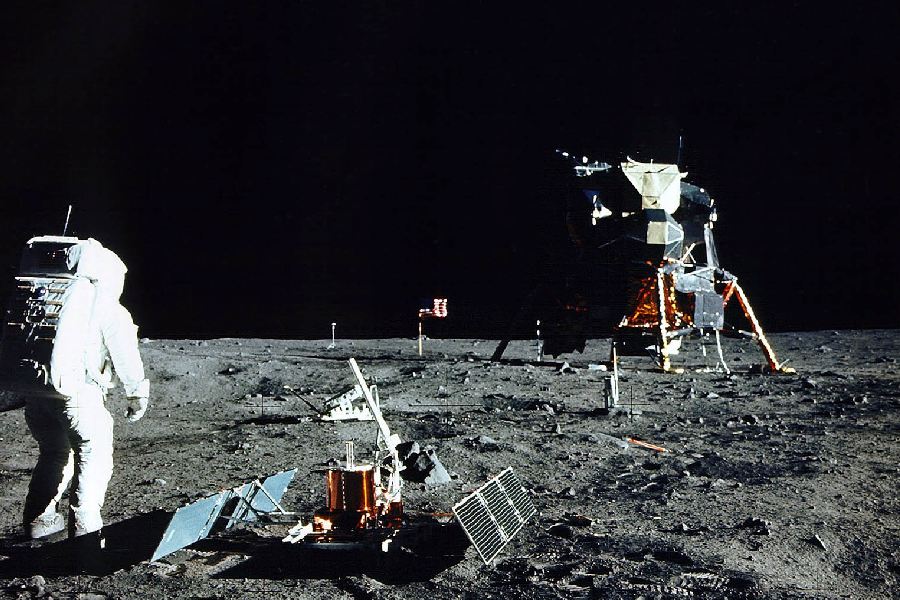NASA’s iconic blue “meatball” logo has come to represent awe-inspiring feats of space exploration across the solar system and beyond. The American space agency has led key milestones. These include putting the first footprints on the Moon, roving across Mars, and launching advanced telescopes to reveal incredible cosmic phenomena in sharp detail.
Yet the four simple letters forming its famous acronym hold a deeper meaning. What does NASA stand for?
Behind the excitement of discovery lies the critical organization structure, capabilities, and vision that allowed NASA to achieve so many firsts across space history stretching back over six remarkable decades.
Below, we’ll break down the meaning of NASA and share some impressive facts about this incredible organization. As we revisit NASA’s origin timeline and core infrastructure elements, we’ll hope to clarify common misconceptions like NASA solely focusing on human spaceflight when over 90% of missions prove robotic.

What Does NASA Stand For?
Established in 1958, NASA conducts space missions, explores celestial bodies, and advances scientific understanding of space, Earth, and the universe. As the pioneering civil space agency of the United States, it drove both robotic and human missions to orbit outposts, the Moon, and other planets to make scientific discoveries.
The agency has played a crucial role in significant space achievements, including the Apollo Moon landings, the Space Shuttle program, and ongoing missions to explore Mars, study distant planets, and observe the cosmos.
After getting acquainted with all these successful milestones, learning what does NASA stand for and is NASA a government agency, adds more to your knowledge. So, NASA stands for the National Aeronautics and Space Administration. It is the United States government agency responsible for the nation’s civilian space program and for aeronautics and aerospace research.
Although NASA works closely with international and commercial partners, it functions as the primary American governmental space center devoted to peaceful exploration missions sponsored across disciplinary boundaries.
A Detailed Definition of NASA
The National Aeronautics and Space Administration, or NASA, constitutes the civil space program and aeronautics research agency of the United States federal government.
Formed in 1958 during the early space age, NASA serves as the primary national body responsible for U.S. space exploration projects across human spaceflight, aeronautics, scientific research, and technological development.
Comprehending NASA’s organizational structure, capabilities, and areas of focus proves vital to appreciating both historical accomplishments like the Apollo moon landings as well as present-day robotic Mars missions and plans for future human deep space exploration.
As the epicenter of America’s non-military space efforts for over 60 years, demystifying what exactly NASA represents and does also illuminates less recognized aspects. Such aspects include aeronautics research and earth science programs benefiting life on our own planet alongside the quest to push boundaries outward across the cosmos.
NASA History Timeline – A Cosmic Journey Unveiled
When was NASA founded?
NASA formally launched into existence on October 1, 1958 with the merger of several predecessor government agencies and research centers focused on aeronautics and early rocketry initiatives.
Initial headquarters opened in downtown Washington to coordinate policy, budget allocation, and program management across decentralized space technology research happening in key facilities inherited around the country. So, these were the primal reasons why was NASA created.
Key milestones
Just two years after NASA started operations, the first successful American orbital mission achieved liftoff when John Glenn completed three Earth loops from Cape Canaveral in 1962. Other major milestones included:
- Project Gemini missions in the mid-1960s preparing for deep space
- The Apollo program placing astronauts on the Moon by 1969
- Mariner flybys of Venus and Mars proving interplanetary robotic exploration
- Space Shuttle program launching routine missions into Earth orbit through 2011
- Hubble Space Telescope unlocking mysteries of cosmology and astrophysics
- Construction of the International Space Station beginning in 1998
- Spirit and Opportunity rovers initiating ongoing robotic Mars exploration
Ongoing Mars surface exploration became a prime target for astrobiology and human precursor missions going forward this century as NASA sets sights throughout the inner solar system.
Eisenhower’s Vision – Pioneering the Space Frontier
Eisenhower’s perspective
As NASA formalized in 1958 under President Dwight D. Eisenhower, much speculation swirled over whether this new agency would pursue human spaceflight efforts.
Eisenhower wasn’t convinced that investigating extravagant crash programs was worth it. He believed in a more gradual approach, focusing on building capabilities through robotic exploration.
NASA’s role
Yet NASA crafted a balanced portfolio across aeronautics research, scientific satellite systems, lunar probes, and manned spacecraft to satisfy scientific constituencies and public imagination alike.
The Mercury then Gemini programs progressed through formative steps culminating in the bold vision President Kennedy issued for NASA shortly after taking office – to land a man on the Moon and return him safely to Earth before 1970.
This declaration propelled the intensive Apollo program in what became a soaring pinnacle of pioneering excitement chartering new cosmic frontiers through human tenacity.

Kennedy’s Call to the Stars – A Vision Takes Flight
Kennedy’s vision
Upon taking office in 1961, President John F. Kennedy sought to reinvigorate American space efforts burgeoning along tentative early steps. Committing national prowess to a bold timeline for human lunar landings, Kennedy charted a daring new direction.
This direction shifted from prior gradualist approaches focused on capabilities demonstration. His vision of a Moon shot mobilized resources within a compressed schedule in hopes of achieving an astonishing feat.
Impactful speech
Kennedy’s seminal 1962 “We choose to go to the Moon” speech at Rice University declared expansive ambitions for the nation now marshaling forces. It framed space as a new frontier inspiring exploratory transformation through technology and teamwork.
His address proved catalytically rhetorical in launching the intense Apollo program built on accelerating precursor Mercury and Gemini achievements to implement a goal considered unrealistic by many contemporary engineers and rocket scientists.
Yet his invoking leadership expanded perceived boundaries of conceivable undertakings, aligning progress timelines to motivational consequences.
This speech proved formative in galvanizing NASA workforce efforts while securing public enthusiasm and Congressional budgetary support in undertaking a monumentally bold quest few believed possible at the start of the 1960s.
Johnson’s Commitment – Nurturing the Apollo Program
Lyndon B. Johnson’s role
Following the tragedy of President Kennedy’s 1963 assassination, successor Lyndon B. Johnson maintained momentum in pursuing audacious timetables for NASA’s accelerating Apollo program.
Navigating political tensions
While American space efforts enjoyed popular public support through the 1960s, challenges included balancing expenditures on the Vietnam War alongside instrumental social programs of Johnson’s Great Society reforms.
Yet NASA persisted as a smaller budgetary line item gradually progressing through methodical flight testing and incremental capabilities integration. It kept the multi-year Moon landing goal in sharp focus even as massive political ruptures shook the era from growing anti-war movements to lasting civil rights reforms.
Uniting through space exploration
Johnson helped NASA’s space program in important ways. He used his skill at working with Congress to make sure NASA had enough funding. This was for the challenging Apollo program goal of landing astronauts on the Moon before 1970.
At the same time, the country faced other pressing issues. These included the Vietnam War and Johnson’s domestic reforms. Still, NASA was able to gradually make progress testing rockets and spaceships, even during social unrest over civil rights and anti-war movements.
Johnson promoted the idea that NASA’s space exploration achievements were peaceful scientific efforts. He believed they could unite Americans through inspiration despite the escalating tensions and divides of the 1960s.
Apollo Program Triumphs – Touching Celestial Frontiers
Human landings overview
Through successive stages building operational knowledge for human spaceflight, Project Apollo culminated with six successful landings across the Moon’s front side during 1969-1972.
Astronauts first looped the Moon, testing vital maneuvering capability before orchestrating history’s first extraterrestrial footsteps, establishing a budding lunar outpost at Mare Tranquillitatis.
Their trailblazing achievements surpassed prior orbital space flights by pioneer cosmonauts and Mercury astronauts. Instead, they ventured a whopping quarter million miles away from home, with Earth appearing small and delicate in the vast expanse, calling for further exploration.
Lunar landings
Each Apollo landing proved uniquely pioneering – from Neil Armstrong and Buzz Aldrin’s epochal first visit during Apollo 11 to later mission accomplishments like two moonwalk ventures per flight and employing the first lunar rovers enabling increased scientific field study.
Extensive samples returned continue fueling planetary geology breakthroughs today. Alongside planting American flags, Apollo astronauts erected experiments still transmitting data.
Their camera footage and descriptions nourish NASA’s ambition to return future travelers toward sustained bases beside milestone memorials left behind on dusty Oceans long silent.

Conclusion
Exploring what does NASA stand for makes it clear that it is far more than the acronym for the National Aeronautics and Space Administration, formally born in 1958. Behind nostalgic visions of rocket launches and glimpses of other worlds lies the vital organization directing America’s spacefaring ambitions across six decades, and counting.
We hope that reviewing the agency’s chronology, capabilities, and infrastructure elements has shone a light on exactly what NASA represents – an epicenter of exploratory vision navigating scientific, political, and societal currents toward celestial achievements once only dreamed of.
From sound barrier to color barrier, NASA continues pushing frontiers on behalf of global knowledge and reminding us that no worldly barrier long endures the audacity of human ingenuity and questing spirit ascending in peaceful skies.
